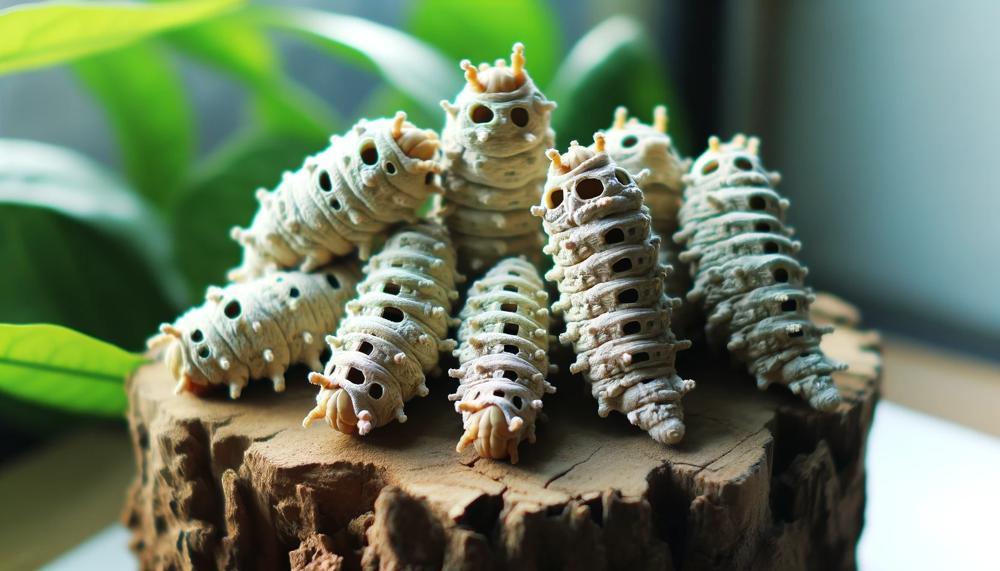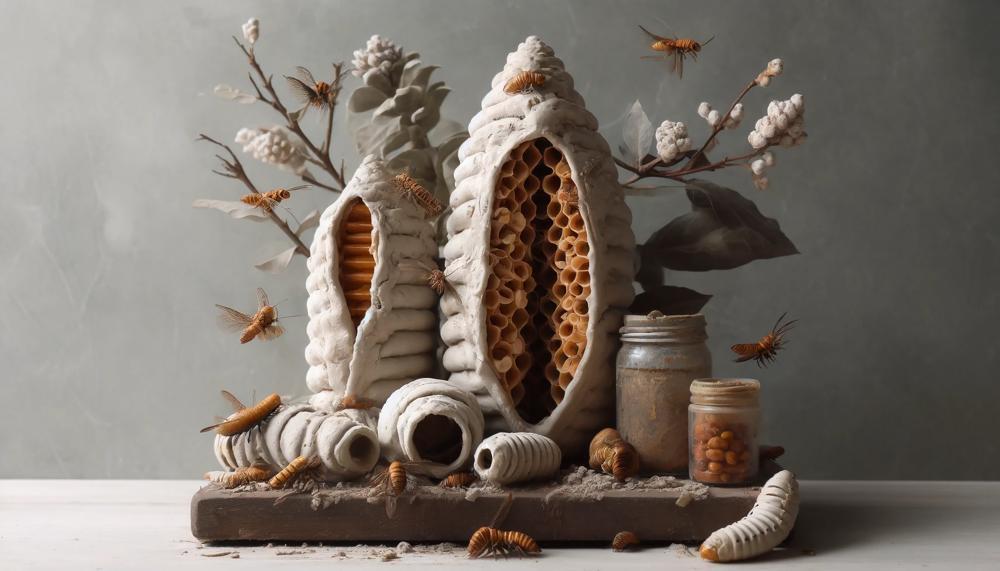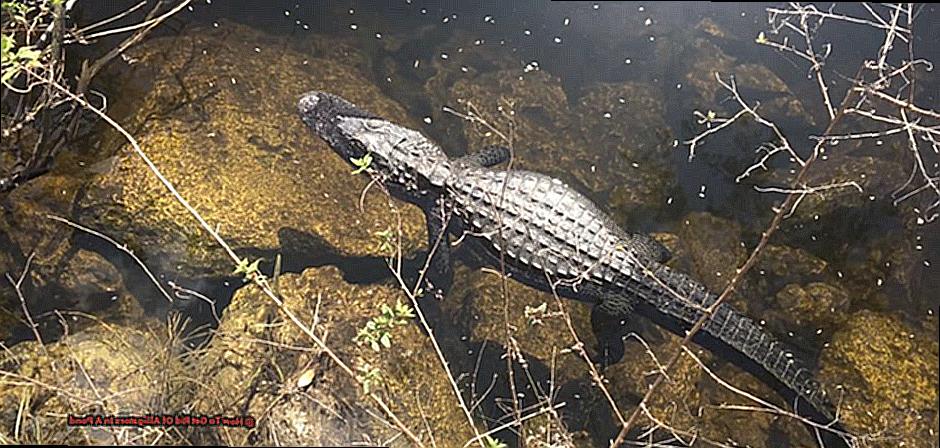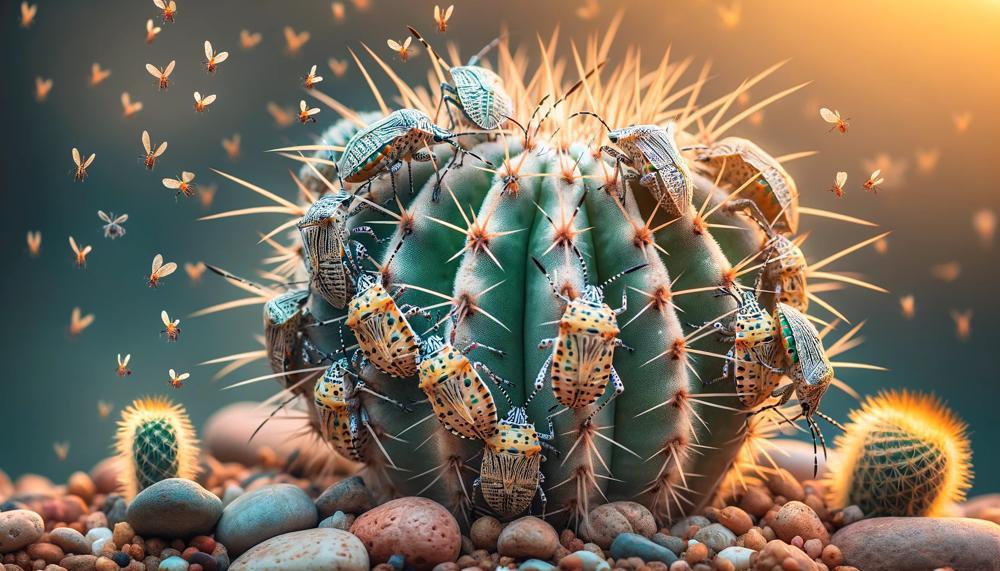Did you know a tiny creature lurking in your home could be secretly damaging your belongings and compromising your indoor air quality? Enter the plaster bagworm, a small but mighty pest that many homeowners battle without even realizing the extent of its presence. These unassuming critters, though often overlooked, pose a significant challenge to anyone who prefers their living space free from unwanted guests and their belongings intact.
This article is your go-to guide for understanding and tackling plaster bagworms using methods that harmonize with nature. We’re diving deep into strategies that not only aim to remove these pests but do so in a way that’s gentle on the environment and safe for your home.
So, how to get rid of plaster bagworms naturally?
This is a list of harmless ways to get rid of plaster bagworms:
- Using diluted neem oil to kill young bagworms by smothering is only successful when the bagworms are pupating or hatching. Neem oil is safe for you and your pets to touch, but eating it can irritate and inflame your stomach.
- For this natural, safe powder, diatomaceous earth is made from the ancient remains of small watery creatures. If you sprinkle diatomaceous earth around the places where bagworms are living, it will dry them out and kill them.
- Choose bagworms by hand and drop them into clean water.
- Eliminate existing cases
- Make sure there is enough light.
- Fix cracks
You can also get rid of bagworms with insecticidal soaps, Bring in birds that eat other bugs, use bacteria that kill bagworms, bring in Trichogramma wasps, and spray chemical or natural poisons.
You could also clean really well, Cutting down on outside lights, Keeping the humidity and weather in check, vacuuming, and getting rid of spider webs from your home.
Let’s dive in now.
Table of Contents
- 1 How To Identify Plaster Bagworms And Their Cocoons
- 2 Steps To Get Rid Of Plaster Bagworms In Homes And Buildings
- 3 Using A Vacuum Cleaner Or Lint Roller To Remove Plaster Bagworms
- 4 Sealing Cracks And Crevices To Prevent Plaster Bagworm Re-Entry
- 5 Applying Insecticides Specifically Labeled For Plaster Bagworms
- 6 Natural Remedies For Getting Rid Of Plaster Bagworms, Such As Sticky Traps, Neem Oil, Diatomaceous Earth, And Essential Oils
- 7 Importance Of Prevention And Good Sanitation Practices To Avoid Plaster Bagworm Infestations
- 8 Using A Vacuum Cleaner Or Lint Roller To Remove Plaster Bagworms
- 9 Conclusion
How To Identify Plaster Bagworms And Their Cocoons
Identifying plaster bagworms and distinguishing them from other household pests primarily rely on observing their unique appearance and behavior. Here’s a straightforward guide:
| Feature | Plaster Bagworm (Phereoeca Uterella) | Regular Household Pest (e.g., Clothes Moths) |
| Appearance | Greyish, bag-like exterior up to half an inch long, made of silk intertwined with debris like lint and spider webs. | Typically small, winged insects without the protective casing, varying in color from light beige to dark brown. |
| Behavior | Found clinging to walls or ceilings, feeds on spider webs, wool, and pet hair. Prefers high humidity environments. | Often found near or in food sources like wardrobes, pantries, prefers fabric or food stuff depending on species. |
| Habitat | Indoors and outdoors, in more humid areas of homes such as basements, garages, and under furniture. | Typically found indoors near their food sources like clothes, carpets, grains, and other stored food items. |
| Risk to Humans | Not harmful directly but can damage fabrics and belongings made from natural fibres. | Depending on the pest, risks vary from fabric damage (clothes moths) to health risks (cockroaches). |
To spot these critters, keep an eye out for the distinctive silken bags that plaster bagworms create. These bags are often attached to walls, ceilings, or tucked away under furniture.

Unlike regular pests which roam openly or are found near their chosen food sources, plaster bagworms remain within their protective casings as they move.
Steps To Get Rid Of Plaster Bagworms In Homes And Buildings
Bagging plaster bagworms ain’t as hard as herding cats, but it sure needs a dash of know-how and a sprinkle of elbow grease. Here’s the skinny on how to show these wee beasties the door, using nothing but what Mother Nature gifted us.
Essential Oils: Nature’s Own Pest Repellers
| Oil Type | How It Works | Application Method |
| Peppermint Oil | A smell so strong, it sends bagworms packing. | Mix a few drops with water and spray in hotspots or soak cotton balls and stash ’em where you’ve seen the critters. |
| Cedarwood Oil | Its woodsy aroma is kryptonite to bagworms. | Same drill as peppermint: mix, spray, or dab on cotton balls and deploy. |
The Mighty Powders: Dusting Out Unwanted Guests
| Powder Type | How It Works | Application Method |
| Diatomaceous Earth | A fossil powder that’s like walking on broken glass for bagworms. | Lightly dust areas where these buggers roam or nest. |
| Neem Oil Powder | Disrupts the pests’ party by interfering with their life cycle. | Mix with water and spritz around or apply directly to affected areas. |
Don’t Just Fight, Prevent.
- Keep it Clean: A tidy home is your first line of defence. These critters love clutter, so keep things spick and span.
- Seal the Deal: Cracks and crevices are VIP entrances for bagworms. Seal them up tight.
- Dry as a Bone: Bagworms are suckers for moisture. Keep your abode dry; consider a dehumidifier if you’re living in damp conditions.
With these tools in your arsenal, plaster bagworms will be booking a one-way ticket out of your home. Remember, the key is persistence and prevention.
Using A Vacuum Cleaner Or Lint Roller To Remove Plaster Bagworms
| Method | Description | Tips and Considerations |
|---|---|---|
| Vacuum Cleaner | A vacuum cleaner can be a powerful tool in sucking up plaster bagworm casings and webs from walls, ceilings, and corners of your home. | – Use an attachment with a soft brush to avoid damaging paint or wallpaper. – Vacuum regularly, especially in corners and behind furniture, to catch bagworms before they multiply. – Empty the vacuum bag or canister immediately after use to prevent the pests from escaping. |
| Lint Roller | For surfaces where a vacuum might be too cumbersome, a lint roller offers a simple and effective way to pick up bagworm casings. | – Ideal for clothing, upholstery, and curtains. – Regularly replace the sticky sheets to maintain effectiveness. – A great spot treatment method but use in conjunction with vacuuming for a comprehensive approach. |
| Preventive Measures | Maintaining cooler temperatures inside your home and reducing outdoor lighting can deter adult moths. Sealing wool items and cleaning regularly eliminate potential food sources for the bagworms. | – Use air conditioning to keep indoor temperatures cool. – Switch off external lights when not necessary to avoid attracting moths. – Store woolen items in sealed plastic bags and vacuum stored items periodically. |
To physically rid your home of plaster bagworms using a vacuum cleaner or lint roller, it’s key to be thorough and consistent. Whether it’s the gentle hum of a vacuum or the quiet stickiness of a lint roller at work, both methods are frontline defenders against these unwelcome guests.
Remember, these critters are the larval stage of a moth that fancy dining on wool, spiderwebs, and similar organic materials. Hence, ensuring complete removal involves not just tackling visible bagworms but also preventing future invasions.
Using a vacuum cleaner allows you to reach high places and tight corners where bagworms like to lodge their cocoon-like bags. The attachment with a soft brush comes in handy here, protecting your home’s aesthetics while you wage war on pests. And remember, after each vacuuming spree, it’s crucial to empty the bag or canister outside your home immediately — you wouldn’t want any crafty escapees.
On the other hand, a lint roller is perfect for quick touch-ups on softer surfaces or areas where dragging out the vacuum feels like overkill. It’s especially useful for clothes or fabric that might have come into contact with these pests. Just peel, roll, and voila.
Sealing Cracks And Crevices To Prevent Plaster Bagworm Re-Entry
Sealing cracks and crevices to prevent the unwelcome return of plaster bagworms is both a smart and necessary step in maintaining a pest-free home.
It’s all about being vigilant and proactive. Here’s how homeowners can effectively keep these pesky intruders at bay:
Identify and Inspect:
Start with a comprehensive inspection around your home, both inside and out. Look for any signs of cracks, gaps, or openings that could serve as entry points for plaster bagworms.
Don’t overlook areas such as window frames, door edges, vents, pipes, and utility lines.
Choose the Right Materials:
Next up, arm yourself with the right sealing materials. Caulk, weatherstripping, mesh screens, and specialized foam sealants are your best friends here. Each has its own place and purpose:
| Material | Use For | Benefits |
| Caulk | Sealing small cracks around windows and doors | Flexible and paintable, providing a neat finish |
| Weatherstripping | Gaps around movable components like doors and window sashes | Improves energy efficiency by blocking drafts |
| Mesh Screens | Covering vents and other openings | Allows airflow while keeping pests out |
| Specialized Foam Sealants | Larger gaps around pipes or in insulation areas | Expands to fill spaces thoroughly, providing an effective barrier |
Application Tips:
- Precision is Key: When applying caulk or sealant, ensure you’re filling the entire gap or crack thoroughly. It’s not just about slapping the material on but making sure it seeps into even the tiniest of openings.
- Regular Maintenance: Sealed areas should not be ‘sealed and forgotten’. Regularly inspect these spots for any signs of wear and tear or new gaps forming.
- Consider Professional Help: If DIY sealing feels like a mountain too high, don’t shy away from calling in professional help. They can provide expert advice and solutions tailored to your home’s specific needs.
Don’t Forget the Outdoors:
Check external structures such as sheds or garages regularly for gaps or damage that may need attention. Sealing these areas is equally important to prevent plaster bagworms from finding their way into your home indirectly.
By following these steps diligently, homeowners can create an effective barrier against plaster bagworm re-entry, turning their homes into fortresses that pests can’t penetrate.
Applying Insecticides Specifically Labeled For Plaster Bagworms
Applying insecticides that are specifically labeled for plaster bagworms offers a targeted approach to tackling these unwelcome guests. Such products are formulated to meet the unique challenge posed by bagworms, striking right at the heart of the infestation.
Benefits of Using Targeted Insecticides
- Effectiveness: These insecticides pack a punch specifically designed to knock out plaster bagworms, ensuring your efforts aren’t in vain.
- Long-lasting control: They don’t just hit and run. Instead, they linger, guarding your home against future invasions by creating a no-go zone for any bagworm thinking about setting up shop.
- Safety: Formulated with the pests in mind, they tend to be safer around non-target species when applied correctly, reducing unwanted collateral damage.
How to Apply for Best Results
| Step | Action | Details |
| 1 | Read Instructions | Every product has its playbook. Don it like armour – know it inside out. |
| 2 | Wear Protective Gear | Gloves, masks, possibly a cape – whatever keeps you safe. |
| 3 | Proper Dilution and Application | Mix as told, not a drop more. Use a sprayer to coat infested areas evenly. |
| 4 | Ventilation | Breathe easy – ensure the area is well-aired during and after application. |
| 5 | Repeat if Necessary | Some foes require a second round. Check back in two weeks; reapply if you spot trouble. |
Remember, timing is everything. Applying too early or too late in the bagworms’ life cycle could turn your efforts into nothing more than an elaborate dance with no audience. Aim for when they’re most vulnerable, typically when larvae emerge and start feeding.
Lastly, keep your kit prepped and ready for action. Regular inspections and prompt treatments will keep these plaster plunderers at bay. It’s not just about waging war; it’s about laying down the law – letting every would-be intruder know your home is defended, now and forevermore.
Natural Remedies For Getting Rid Of Plaster Bagworms, Such As Sticky Traps, Neem Oil, Diatomaceous Earth, And Essential Oils
| Natural Remedy | How It Works | Application Method |
| Diatomaceous Earth (DE) | Pierces the exoskeleton of plaster bagworms, leading to dehydration and death. | Sprinkle a thin layer on affected areas like window sills, and in cracks and crevices. Reapply every few days until the infestation is controlled. |
| Neem Oil | Disrupts the life cycle of insects, preventing reproduction and survival. | Mix 2 tablespoons of neem oil with 1 gallon of water and spray on infested areas. Repeat application every few days until pests are eliminated. |
| Vacuuming | Physically removes the insects from your home. | Use a vacuum with a HEPA filter to suck up visible bagworms on walls, ceilings, and floors. Ensure to empty the vacuum bag or canister immediately after use. Repeat regularly. |
| Essential Oils (e.g., Peppermint, Eucalyptus, Lavender) | Emits strong scents that are unpleasant to plaster bagworms, acting as a repellent. | Mix a few drops of your preferred essential oil with water and spray on infested areas. Alternatively, add a few drops to a diffuser to keep bagworms at bay. |
Bagging those bothersome plaster bagworms ain’t no Herculean task when you’ve got these natural remedies up your sleeve. Each remedy tackles the problem head-on, either knocking the critters dead or making your home as unwelcoming as a cold shoulder on a winter’s night.
Remember, it’s all about consistency; these aren’t one-hit wonders but trusty sidekicks in your ongoing battle against unwanted guests.
Importance Of Prevention And Good Sanitation Practices To Avoid Plaster Bagworm Infestations
Proper prevention and sanitation practices play a pivotal role in keeping plaster bagworms at bay, ensuring your home remains a fortress against these unwelcome guests.
By adopting a proactive approach to cleanliness and environmental control, you can significantly reduce the risk of infestation in your household. Let’s dive into the specifics:
Keep It Clean and Clutter-Free
| Strategy | Action | Benefit |
| Vacuum Regularly | Vacuum all areas of the home, focusing on carpets, under furniture, and dark corners. | Removes potential food sources and physically eradicates eggs or larvae. |
| Minimize Clutter | Reduce clutter where bagworms might hide or find fibers to feed on. | Limits hiding spots and food sources for larvae. |
| Clean Stored Items | Regularly inspect and clean stored fabrics and food items. | Prevents egg-laying on susceptible materials, reducing future populations. |
Control Your Environment
Maintaining an environment that’s less inviting to plaster bagworms is crucial. Here’s how:
- Humidity Control: Deploy dehumidifiers or air conditioners to keep humidity levels below 50%. Plaster bagworms flourish in moist environments; by reducing humidity, you’re making your home less appealing to them.
- Seal Entry Points: Examine your home for cracks or openings in walls, windows, and doors. Use weather-stripping or caulk to seal these potential entryways, creating a barrier against these tiny invaders.
Sanitation Is Key
Impeccable sanitation practices are your frontline defense against plaster bagworm invasions. Incorporate these habits:
- Dust and Clean Surfaces Regularly: Wipe down all surfaces routinely to remove dust and potential food particles that might attract bagworms.
- Manage Waste Efficiently: Ensure trash is disposed of properly and regularly. Leftover food or debris can be an open invitation for plaster bagworms seeking sustenance.
- Kitchen Hygiene: Avoid leaving dirty dishes out overnight and store food in sealed containers. A clean kitchen deters not only plaster bagworms but also other pests.
Immediate Action Against Infestations
If you spot signs of an infestation, swift action is essential:
- Natural Repellents: Employ natural methods such as diatomaceous earth, neem oil, or essential oils as initial steps to repel or eliminate bagworms.
- Professional Help: In severe cases, professional pest control services may be necessary.
Using A Vacuum Cleaner Or Lint Roller To Remove Plaster Bagworms
Using a vacuum cleaner or lint roller to effectively rid your home of plaster bagworms involves a methodical approach. Here’s how to do it:
| Step | Action | Details |
| 1. | Spot the Invaders | Scour your abode, paying close attention to ceilings, walls, and furnishings, to locate the bagworms and their snug cocoons. |
| 2. | Vacuum or Roll ‘Em Up | Employ a vacuum cleaner for broad surfaces or a lint roller for detailed spots to detach bagworms and cocoons from invaded areas. |
| 3. | Eject the Intruders | Immediately dispose of the vacuum bag or lint roller sheets in an outdoor bin to thwart re-entry into your sanctuary. |
| 4. | Seal Off Entry Points | Meticulously seal cracks and crevices around your dwelling to deny these critters any future access. |
| 5. | Chemical and Natural Aids | If needed, apply insecticides labelled for plaster bagworm use or opt for natural deterrents like neem oil or diatomaceous earth for added defense. |
| 6. | Maintain Cleanliness | A regular cleaning regime, emphasizing vacuuming, is crucial in keeping these pests at bay and ensuring they don’t make a comeback. |
| 7. | Gather Your Arsenal | Equip yourself with the necessary tools such as vacuums, insect sprays, and essential oils from reputable sources like Amazon Singapore for an effective fight against plaster bagworms. |
By following these steps diligently, you stand a good chance at reclaiming your home from the clutches of plaster bagworms. Remember, persistence is key; these unwelcome guests won’t vacate without a bit of effort on your part.
Conclusion
Addressing plaster bagworm infestations in your home goes beyond just a clean-up; it’s about safeguarding your sanctuary against these silent invaders.
The guide provided sheds light on natural, eco-friendly ways to tackle these pests, emphasizing that victory lies not just in confrontation but in prevention. From vacuuming and dusting to the strategic use of natural repellents like neem oil and diatomaceous earth, the battle against bagworms is multifaceted.
Sealing your home against their entry and maintaining a clutter-free environment are your shields in this ongoing war. It’s clear that the fight against plaster bagworms isn’t a one-off battle but a sustained campaign.
Armed with knowledge and natural remedies, homeowners can create a living space that’s not only bagworm-free but also a healthier environment for all its occupants.





